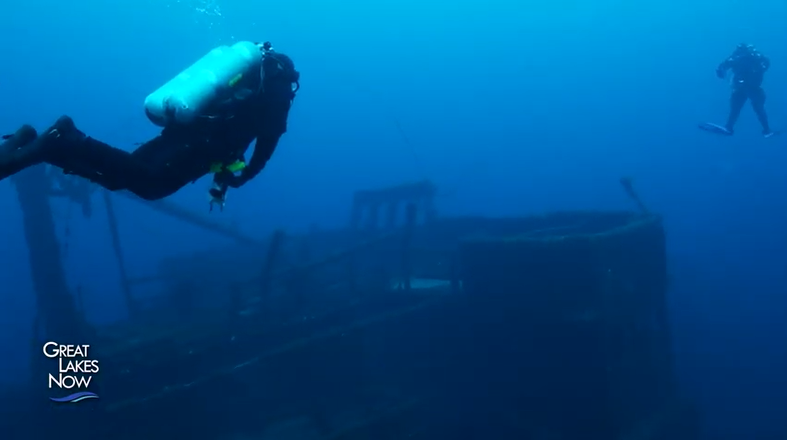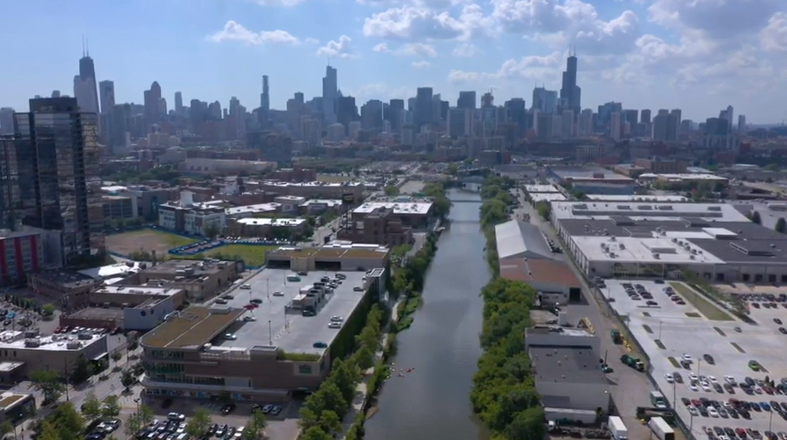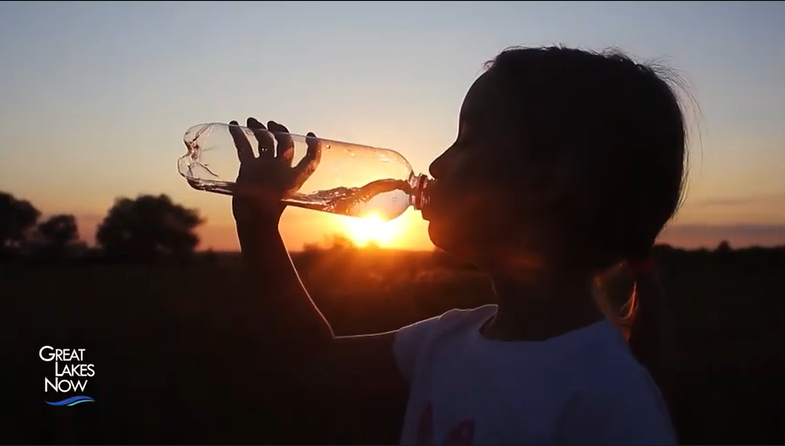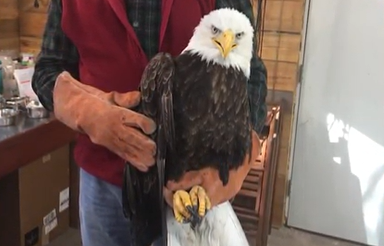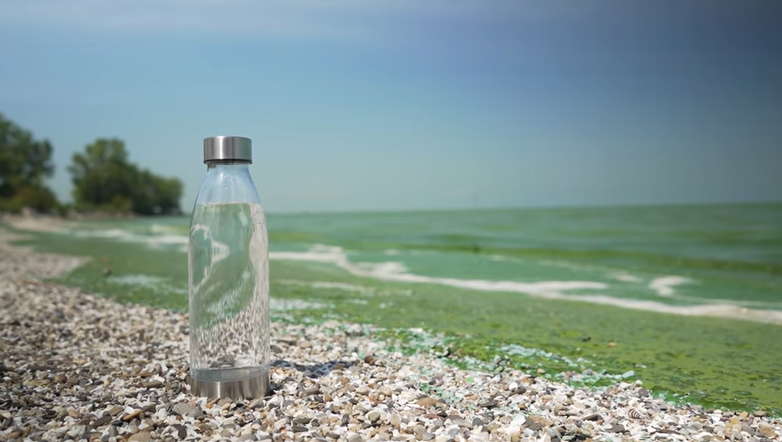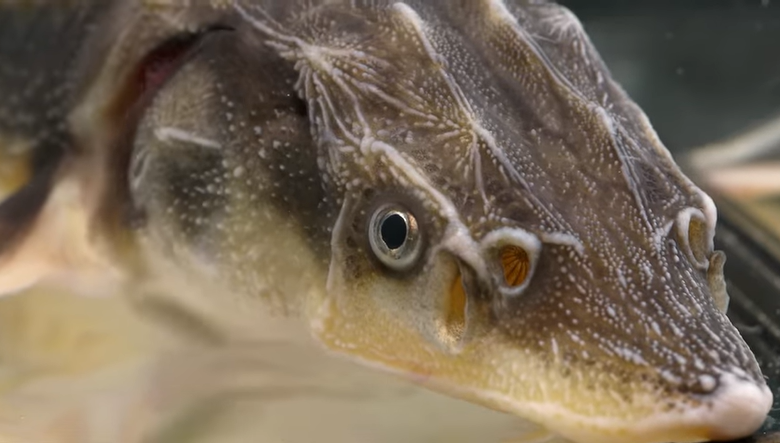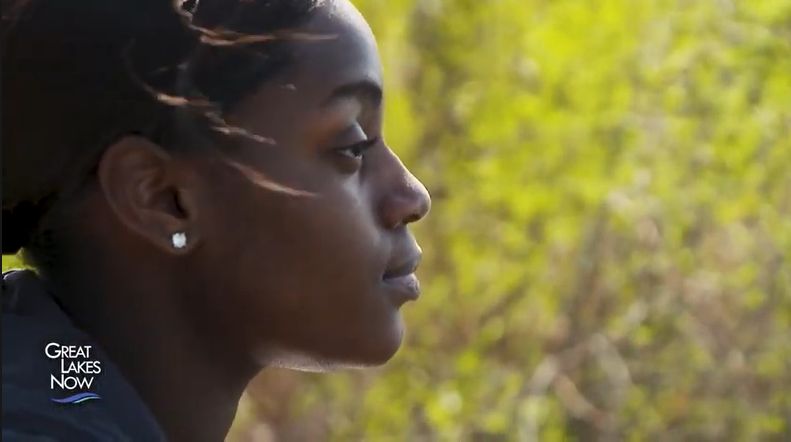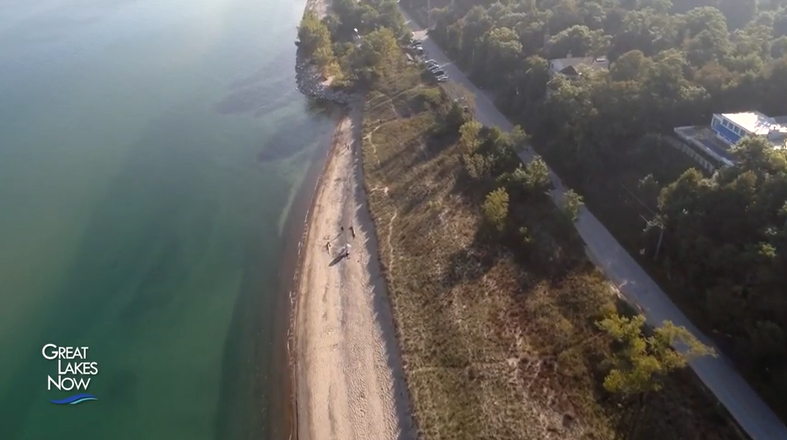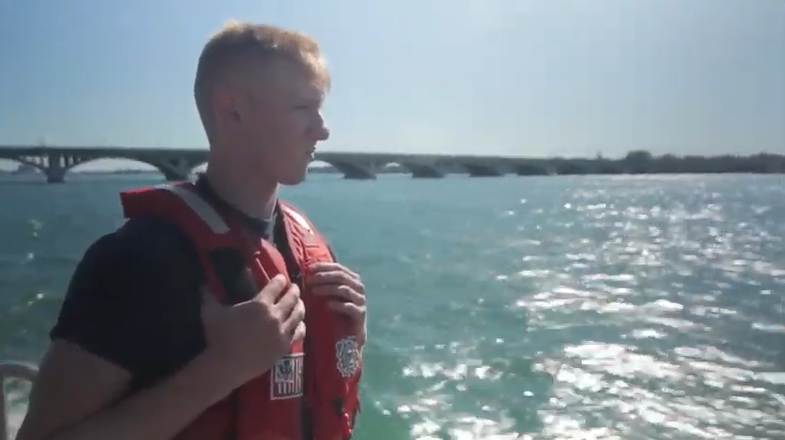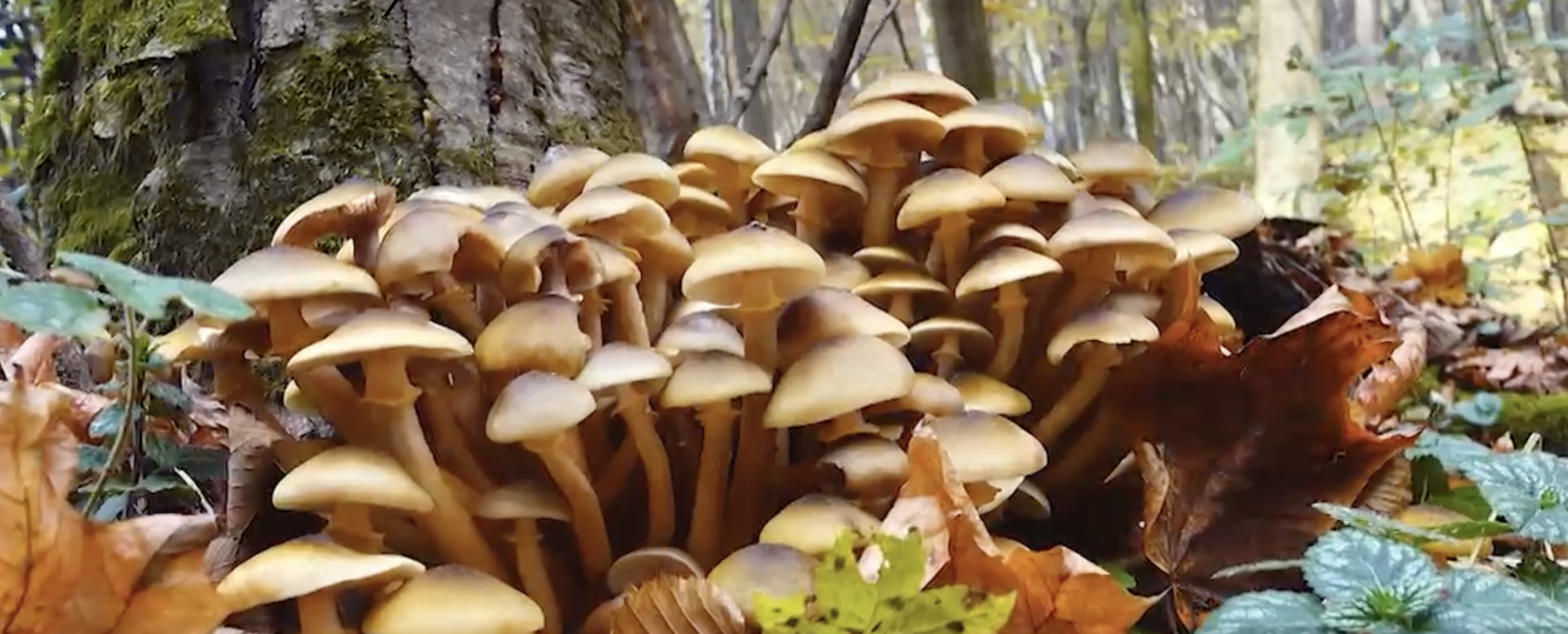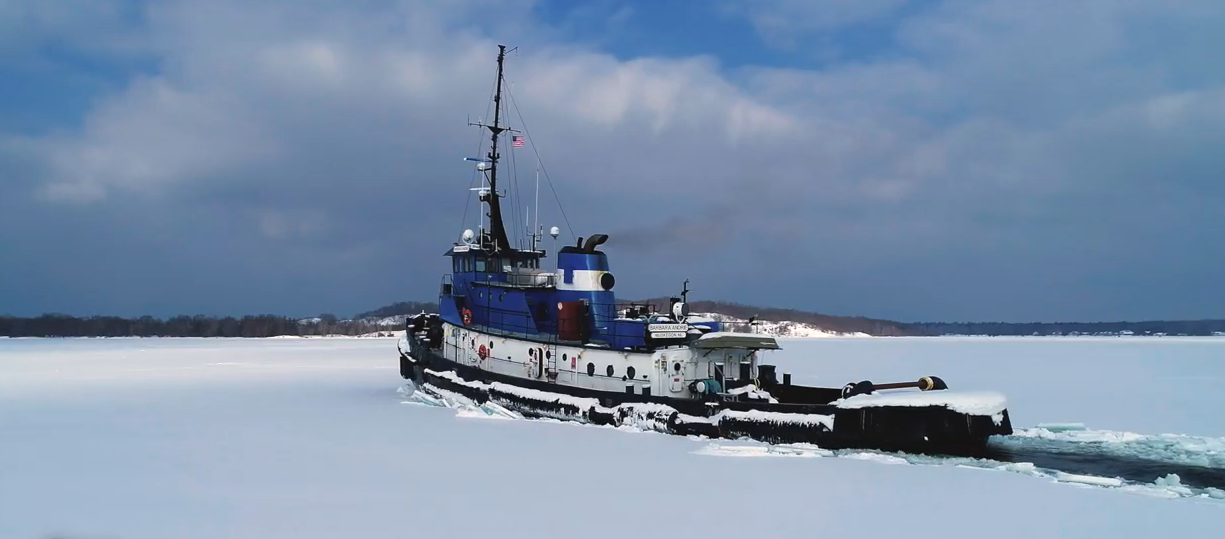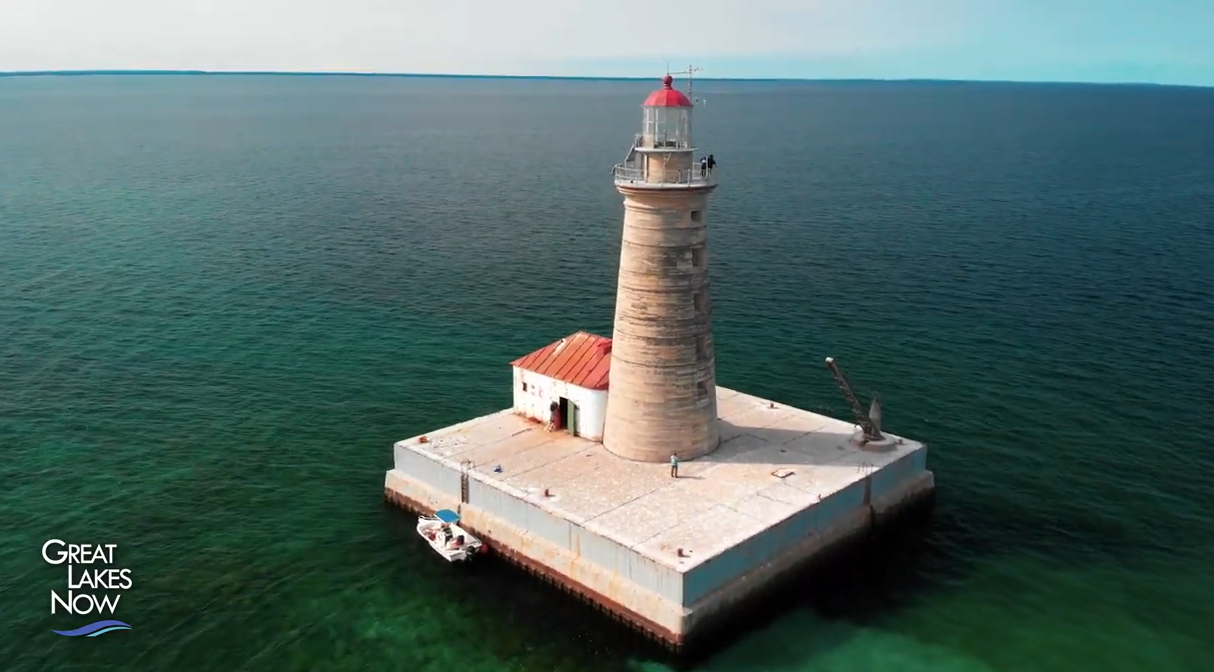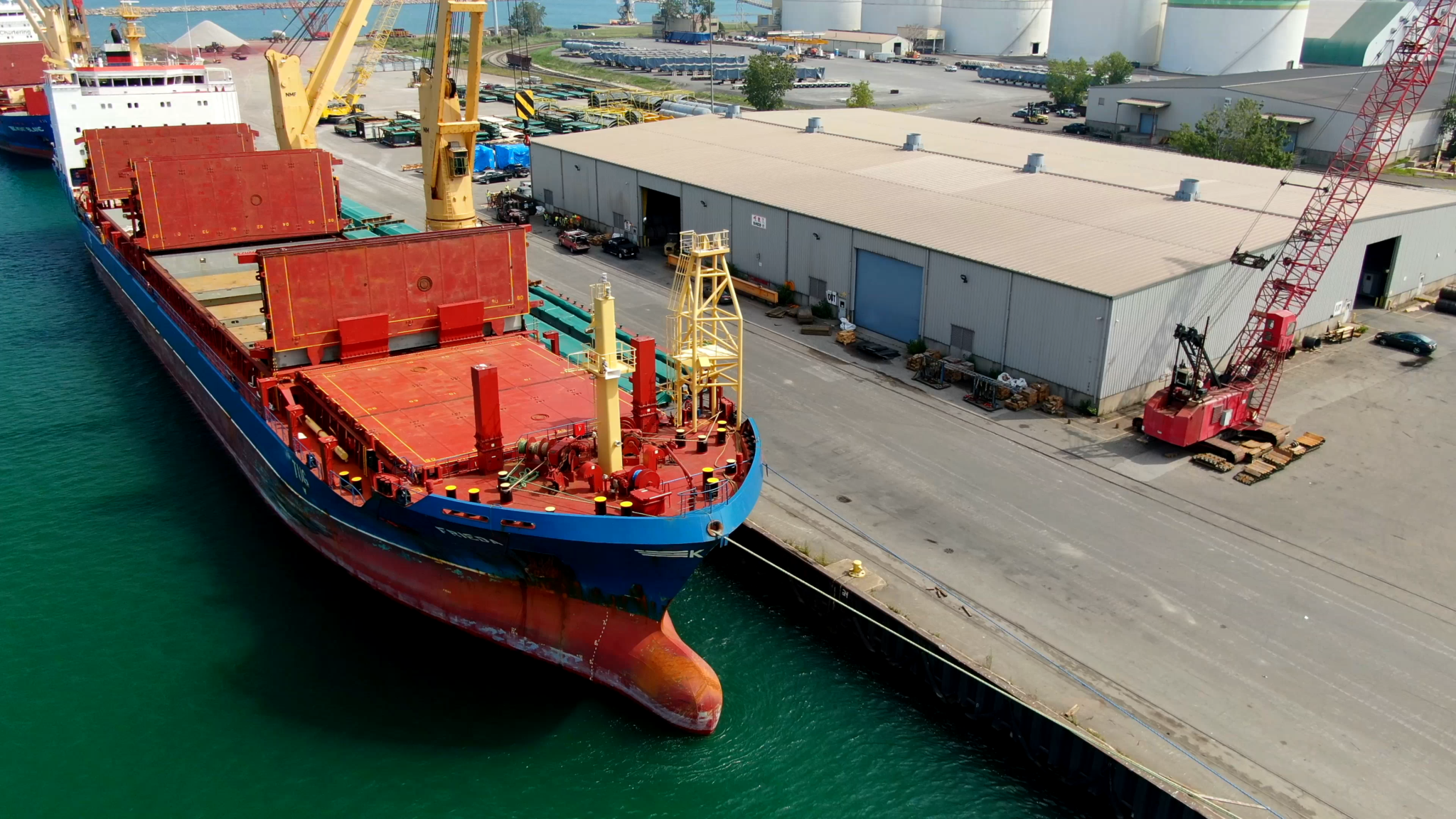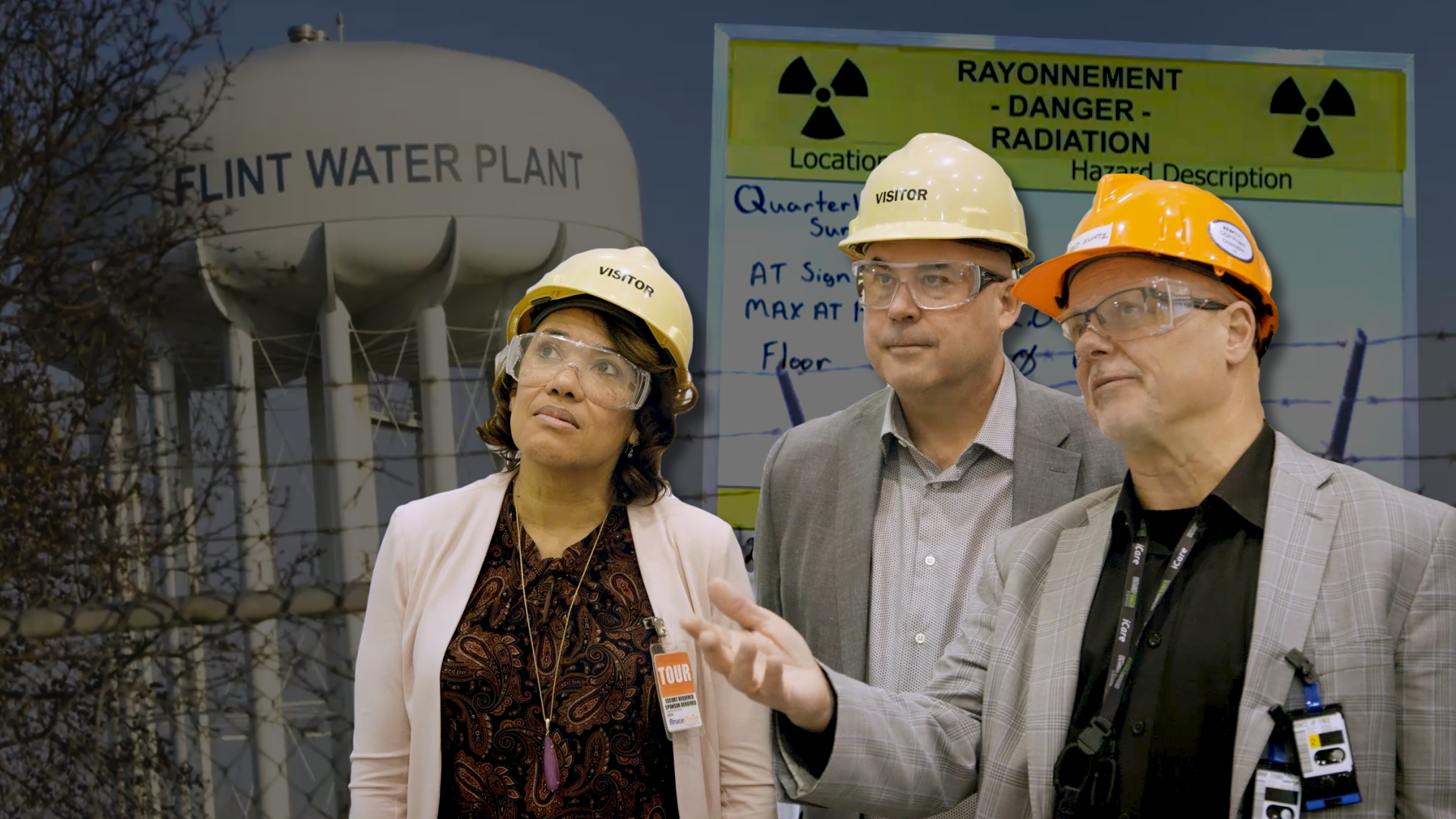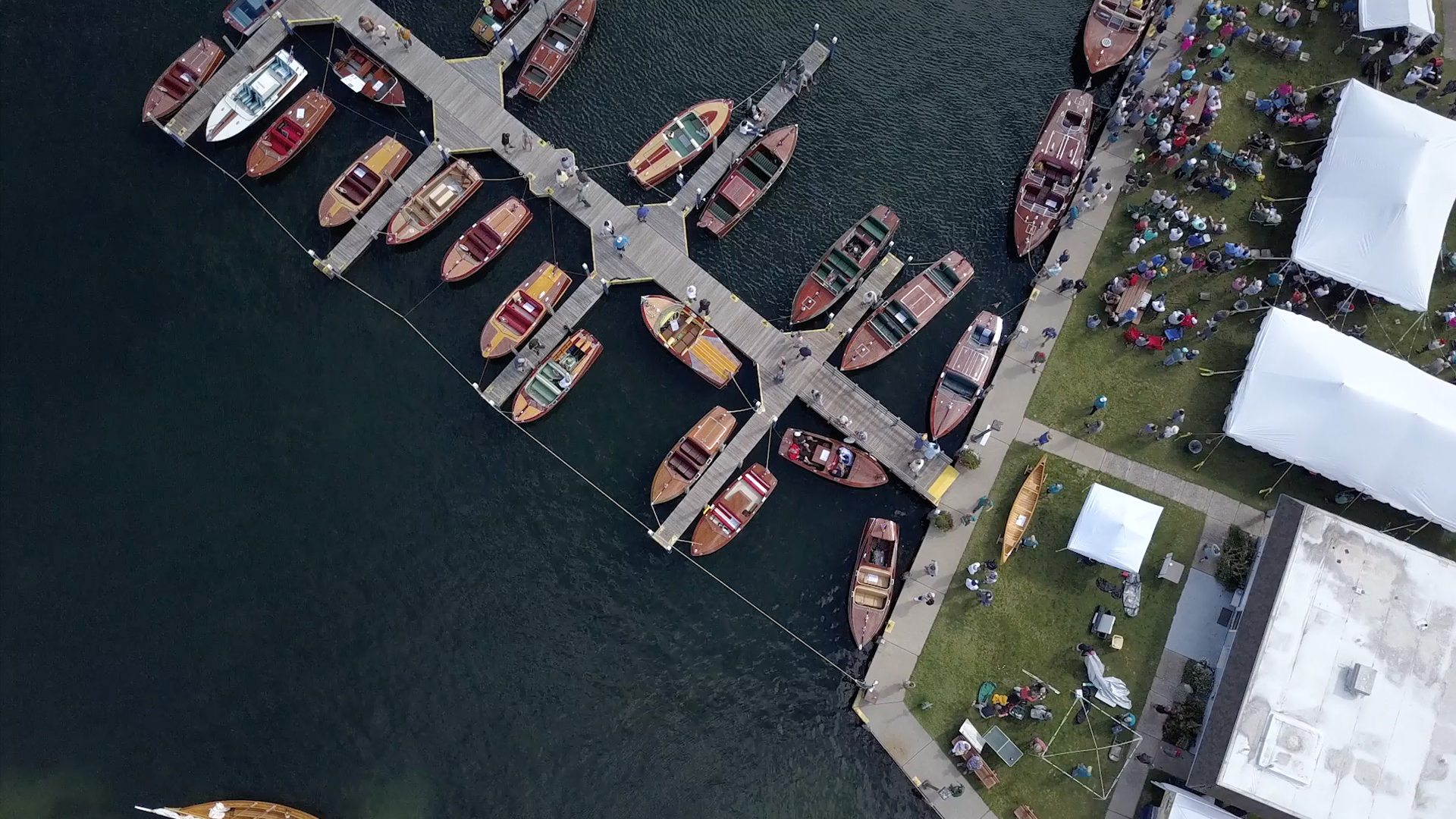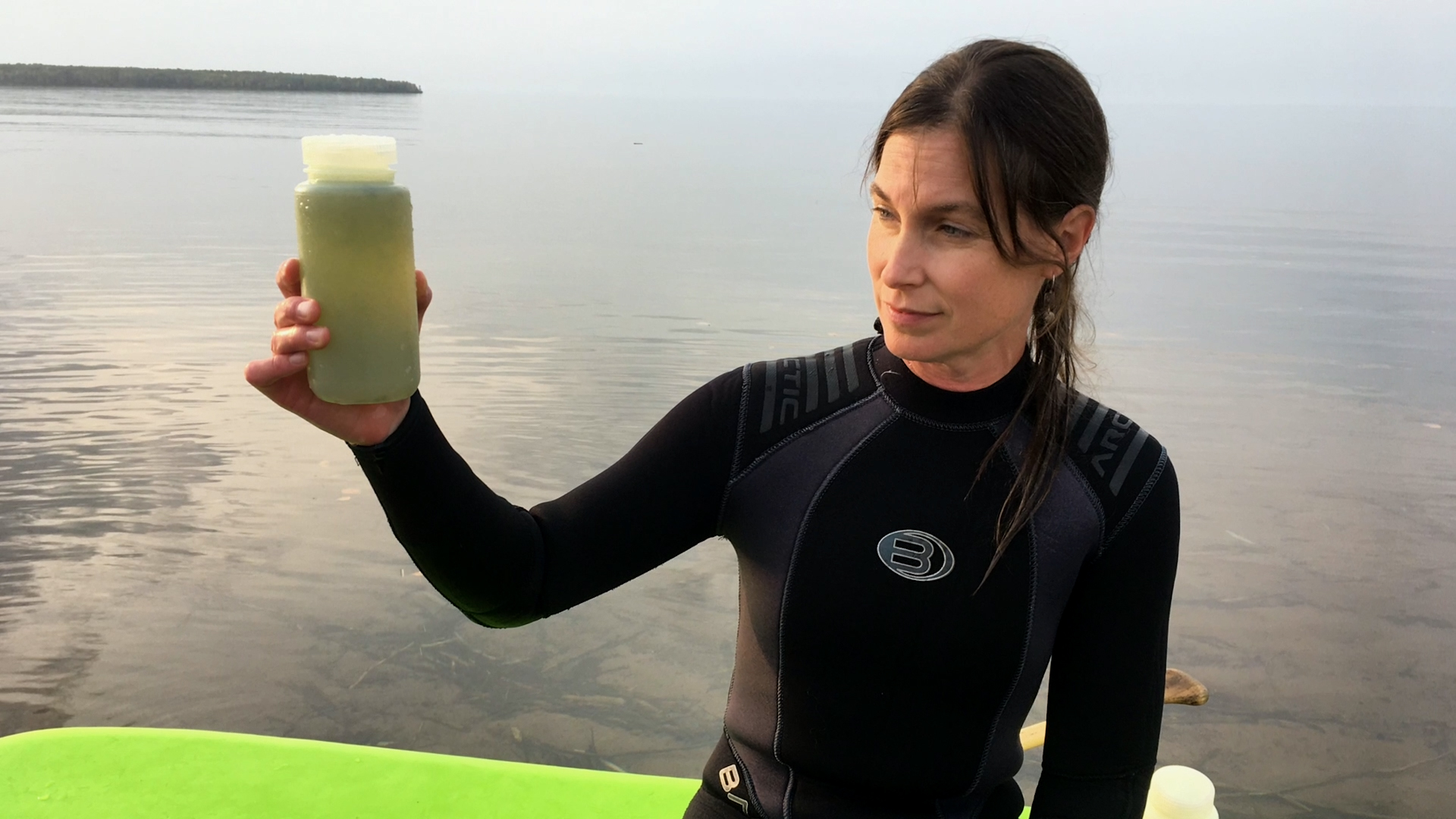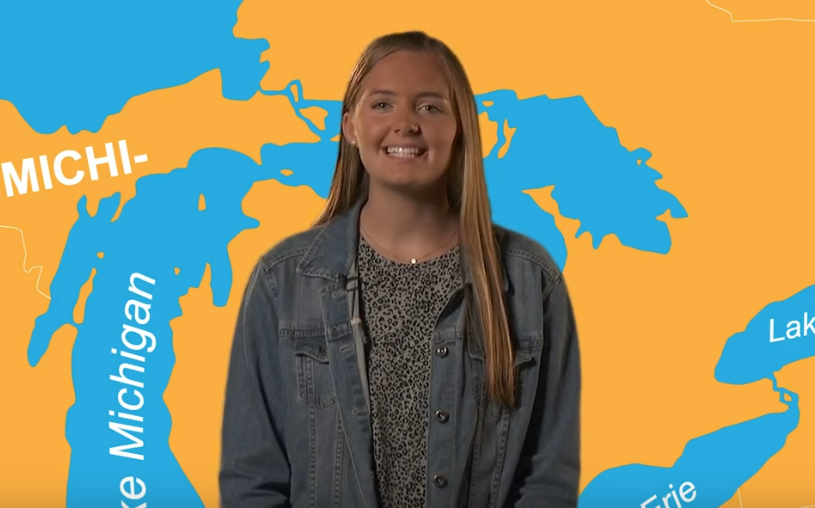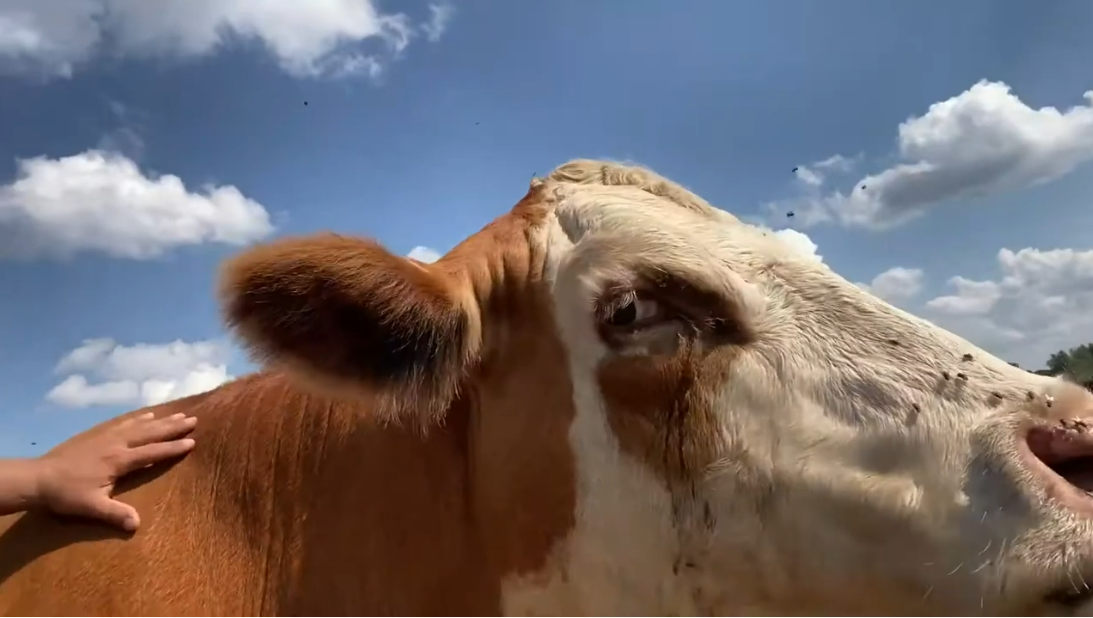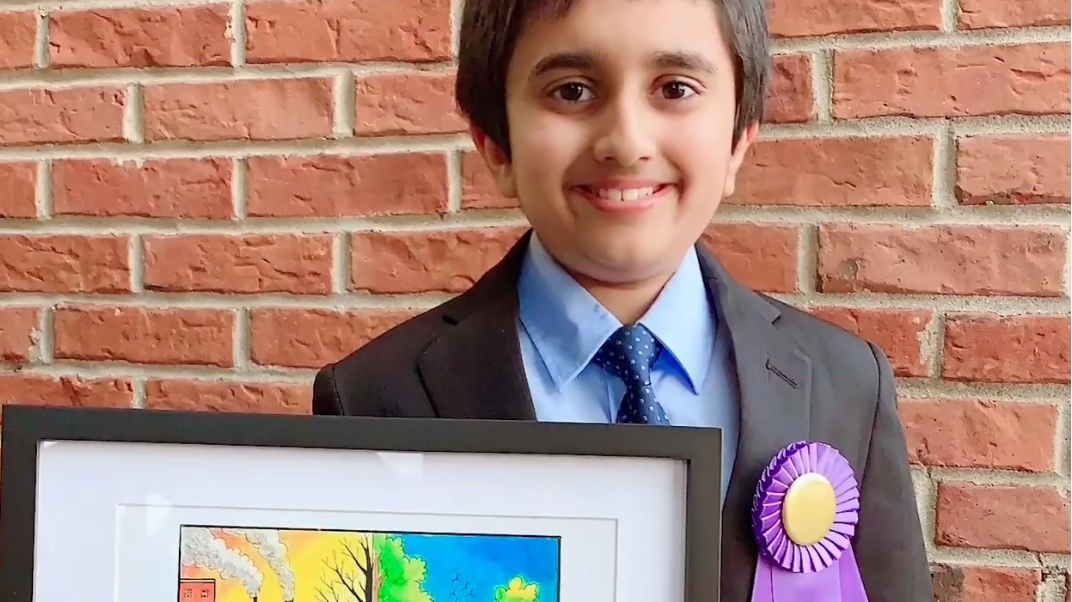Grades
Shows
The Great Lakes only national marine sanctuary brings underwater history up close. Whether you’re in a glass-bottomed boat, looking down from a kayak, or diving underwater, the shipwrecks at the Thunder Bay National Marine Sanctuary give you a haunting look at the past.
A partnership of the John G. Shedd Aquarium’s Kayak for Conservation program and the Urban Rivers organization has created new “floating” islands to replace the habitat and give citizen scientists an opportunity to help with the project and its research. These artificial “islands” are anchored to the river’s edge and bottom, providing a base for plant species to grow and places for fish to spawn and grow. Turtles and birds also find food and shelter among the grasses.
Did you know that over 10,000 tons of plastics enters the Great Lakes every year? Researchers in New York have been looking into plastics pollution in the Great Lakes as they try to grasp the scope and look for possible solutions.
A bald eagle was spotted acting unusual. It turns out that it had severe lead poisoning. Lead poisoning for eagles seems to be more of a consequence of coexisting with humans. Rather than getting shot or consuming the lead directly, the eagles get the lead poisoning from eating fish that have swallowed lead fishing tackle or deer and other game shot with lead bullets.
Algae is so important to our region, but when algae grows extremely fast it's called a bloom. Most of the time they are harmless, but sometimes they can make the water undrinkable, and when thirty-five million people get their drinking water from the Great Lakes Region, that's a problem.
They may start small, but due to restoration, they become very, very big. Great Lakes Now visits the Toldeo Zoo to see Lake Sturgeon. Lake Sturgeon in the Maumee River in Toledo, OH are one of the biggest fish in the Great Lakes Region, and grow up to 8 feet long.
Intern Brionne Davis helped produce a "video diary" for release on Earth Day in advance of the Spring Clean Up on Belle Isle in Detroit.
As the Indiana Dunes area transitions from National Lakeshore to National Park, more visitors are enjoying its beaches and trails. Environmental threats may be increasing too.
From a station on Belle Isle, U.S. Coast Guard boats patrol the Detroit River from Lake St. Clair to Lake Erie. Offer work in partnership with Canadian authorities since this is an international waterway. Go along and see how they ensure boating safety and hear about search-and-rescue and border protection efforts.
Lesson 2204
Explore the phenomenon of fungal networks in the city of Crystal Falls, MI to help students learn some of the [...]
Travel with host Justin Rogers as we meet young people throughout Michigan who use poetry to empower themselves and their communities.
Lesson 2203
This lesson will explore the phenomenon of wind in the winter through the pastime of ice boating to learn about [...]
Lesson 2202
This lesson will explore the phenomenon of ice cover as students learn about ways that winter is “shrinking” in the [...]
Lesson 2201
The Spectacle Reef Lighthouse sits 17 miles from the mainland in the Straits of Mackinac. Built in 1869, it became [...]
Lesson 1031
This lesson will expose students to the science and engineering practice of developing and using models. Through an exploration of [...]
Lesson 1030
This lesson will provide students opportunities to build perspective and empathy as they explore multiple points of view on a [...]
Lesson 1029
This lesson will introduce students to the phenomena of buoyancy and water displacement by helping them understand why a boat [...]
Lesson 1028
Explore the phenomenon of eutrophication by learning the reasons behind the novel algal blooms observed in Lake Superior, the impact [...]
Lesson 112
On today's episode of Extra Credit we visit some of Michigan's most interesting locations, learn about the hog-nosed snake, and [...]
Lesson 111
On today's episode of Extra Credit we meet a chef who used food to help heal a community, take a [...]
Lesson 01
Great Lakes Now Host Ward Detwiler recently judged the Oakland County Water Resources Commissioner's Kids Clean Water Calendar Contest. Here's [...]
Grades
The Great Lakes only national marine sanctuary brings underwater history up close. Whether you’re in a glass-bottomed boat, looking down from a kayak, or diving underwater, the shipwrecks at the Thunder Bay National Marine Sanctuary give you a haunting look at the past.
A partnership of the John G. Shedd Aquarium’s Kayak for Conservation program and the Urban Rivers organization has created new “floating” islands to replace the habitat and give citizen scientists an opportunity to help with the project and its research. These artificial “islands” are anchored to the river’s edge and bottom, providing a base for plant species to grow and places for fish to spawn and grow. Turtles and birds also find food and shelter among the grasses.
Did you know that over 10,000 tons of plastics enters the Great Lakes every year? Researchers in New York have been looking into plastics pollution in the Great Lakes as they try to grasp the scope and look for possible solutions.
A bald eagle was spotted acting unusual. It turns out that it had severe lead poisoning. Lead poisoning for eagles seems to be more of a consequence of coexisting with humans. Rather than getting shot or consuming the lead directly, the eagles get the lead poisoning from eating fish that have swallowed lead fishing tackle or deer and other game shot with lead bullets.
Algae is so important to our region, but when algae grows extremely fast it's called a bloom. Most of the time they are harmless, but sometimes they can make the water undrinkable, and when thirty-five million people get their drinking water from the Great Lakes Region, that's a problem.
They may start small, but due to restoration, they become very, very big. Great Lakes Now visits the Toldeo Zoo to see Lake Sturgeon. Lake Sturgeon in the Maumee River in Toledo, OH are one of the biggest fish in the Great Lakes Region, and grow up to 8 feet long.
Intern Brionne Davis helped produce a "video diary" for release on Earth Day in advance of the Spring Clean Up on Belle Isle in Detroit.
As the Indiana Dunes area transitions from National Lakeshore to National Park, more visitors are enjoying its beaches and trails. Environmental threats may be increasing too.
From a station on Belle Isle, U.S. Coast Guard boats patrol the Detroit River from Lake St. Clair to Lake Erie. Offer work in partnership with Canadian authorities since this is an international waterway. Go along and see how they ensure boating safety and hear about search-and-rescue and border protection efforts.
Lesson 2204
Explore the phenomenon of fungal networks in the city of Crystal Falls, MI to help students learn some of the [...]
Travel with host Justin Rogers as we meet young people throughout Michigan who use poetry to empower themselves and their communities.
Lesson 2203
This lesson will explore the phenomenon of wind in the winter through the pastime of ice boating to learn about [...]
Lesson 2202
This lesson will explore the phenomenon of ice cover as students learn about ways that winter is “shrinking” in the [...]
Lesson 2201
The Spectacle Reef Lighthouse sits 17 miles from the mainland in the Straits of Mackinac. Built in 1869, it became [...]
Lesson 1031
This lesson will expose students to the science and engineering practice of developing and using models. Through an exploration of [...]
Lesson 1030
This lesson will provide students opportunities to build perspective and empathy as they explore multiple points of view on a [...]
Lesson 1029
This lesson will introduce students to the phenomena of buoyancy and water displacement by helping them understand why a boat [...]
Lesson 1028
Explore the phenomenon of eutrophication by learning the reasons behind the novel algal blooms observed in Lake Superior, the impact [...]
Lesson 112
On today's episode of Extra Credit we visit some of Michigan's most interesting locations, learn about the hog-nosed snake, and [...]
Lesson 111
On today's episode of Extra Credit we meet a chef who used food to help heal a community, take a [...]
Lesson 01
Great Lakes Now Host Ward Detwiler recently judged the Oakland County Water Resources Commissioner's Kids Clean Water Calendar Contest. Here's [...]

